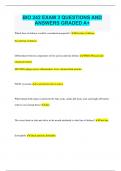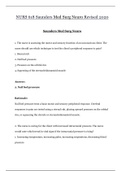Summary
Summary: Consumer and Marketing (MIDTERM 1)
- Course
- Institution
- Book
This is a summary for the first midterm of Consumer & Marketing, covering chapters 1 to 6 of the book: Consumer Behavior, 8th edition. The summary is written in English
[Show more]













